Visit to the Yamazaki Distillery Part Two
We left off in Part One where we were recalled to the meeting point of the distillery tour. We were given English audio guides as our tour will be in most part Japanese. The audio guides also come in other languages – Chinese, French, German and other major European languages.
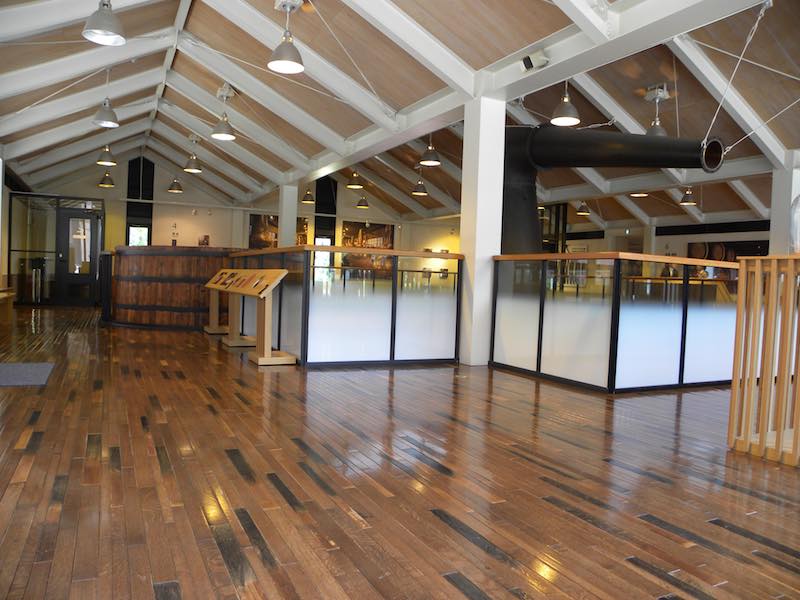
Yamazaki Distillery Tour Starting Point (Credits: WhiskyGeeks)
We were invited to explore the space within the starting point of the tour after gathering our audio guide. We managed to take a picture of the space before it was crowded and that’s what it looks like from the picture above! Nice, clean space with artful designs set to give visitors the maximum comfort.
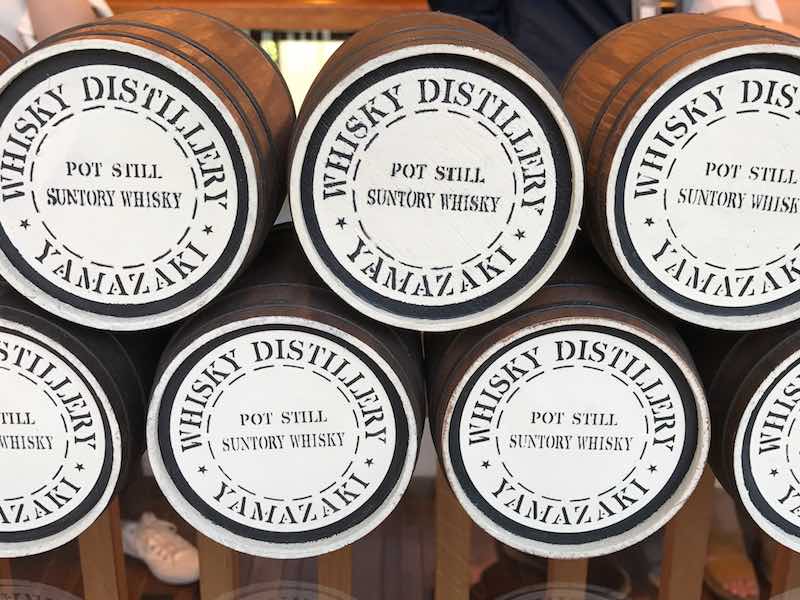
Mini Casks at the Starting Point (Credits: WhiskyGeeks)
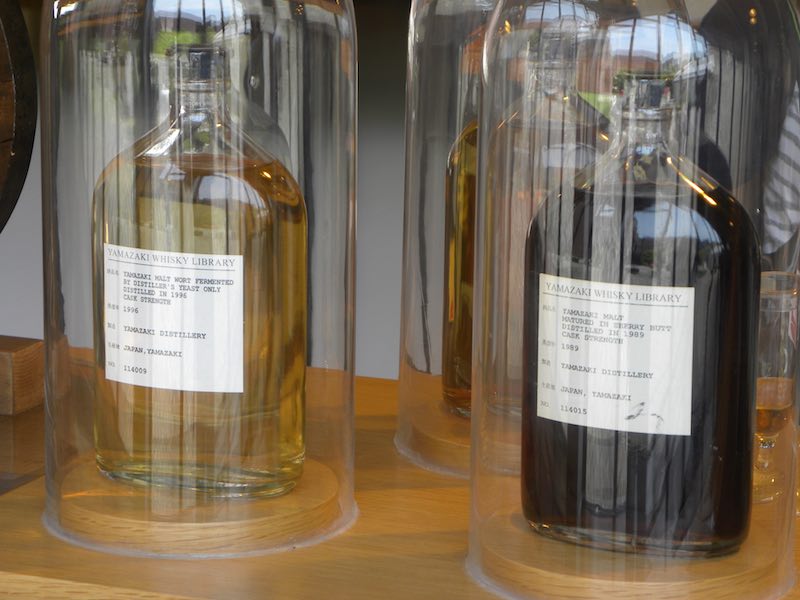
Samples of whisky from Yamazaki Whisky Library (Credits: WhiskyGeeks)
There are also miniatures casks on display as well as sample spirits from Yamazaki very own whisky library. More about the whisky library later. For now, let’s go explore the facilities!
The Distillery Tour Starts
The actual production house is of course, away from the main visitor centre but once we got there, the amazing aroma of malt drifted through the air and into our nose…making all of us go “mmm”…
Station 1: Mashing House and Fermentation Room
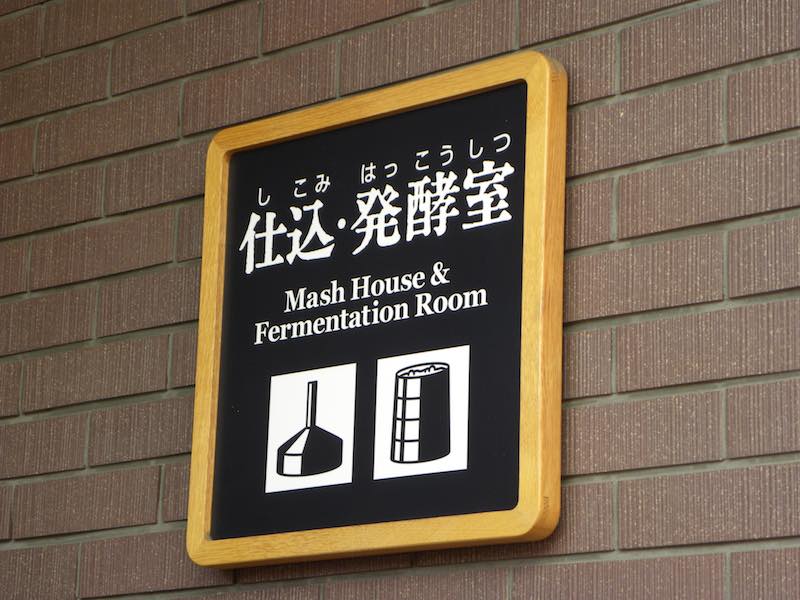
Credits: WhiskyGeeks
The first station was the mash house where malted barley is produced for fermentation. Malt whisky is made from selected two-rowed barley and water. The selected barley is germinated and dried to produce malt, before it is finely grounded and mix with water in a mash tun. The enzymes in the malt will break down the starch contents into sugar. Once that is completed, the mixture is filtered to obtain clear, unclouded liquid called wort.
The temperature in the mash house was high due to the ongoing mashing. The smell of malted barley was rather heavenly though, and we would not have left the station quite as quickly as the tour guide wanted us to if not for the heat.
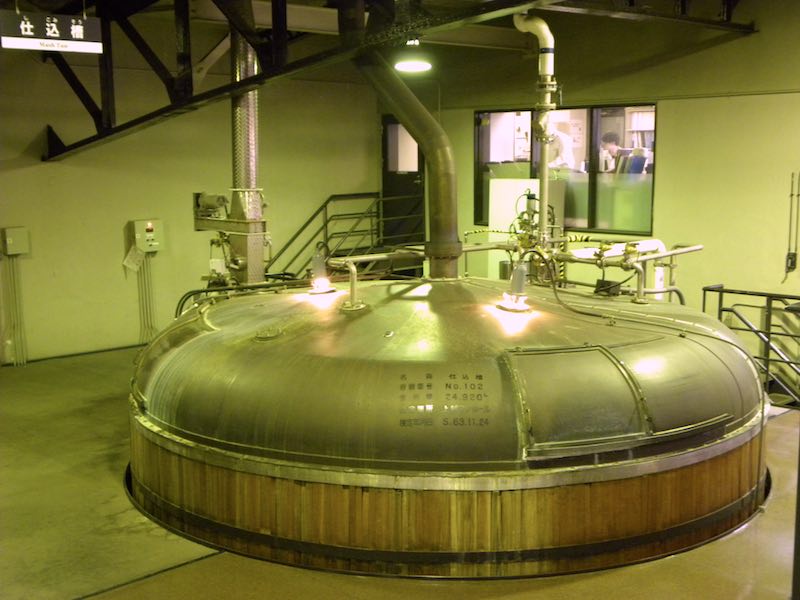
The Mash Tun (Credits: WhiskyGeeks)
Once the filtered wort is collected, it is transferred to the washbacks, and yeast is added to the wort, starting the fermentation process. The yeast converts the sugars in the wort into alcohol and carbon dioxide while generating “wash”, the distinctive flavours that define whisky.
Temperature in the fermentation room was just as high, if not higher. The sweet smell of sugar was distinctive here, and many of us agreed that it kinda smell like fresh bread due to the yeast in the room.
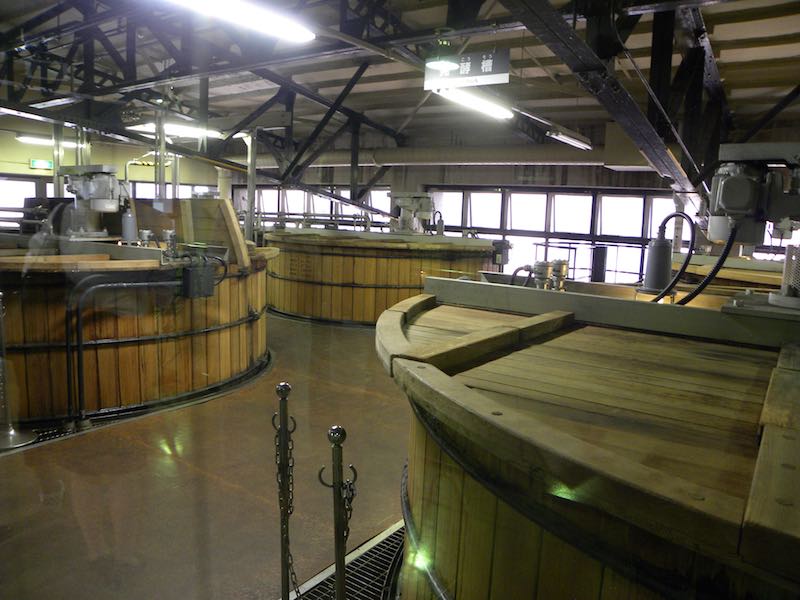
The wooden washbacks (Credit: WhiskyGeeks)
Station 2: Distillation
Next, we walked on to the distillation room, or what they called the Still House.
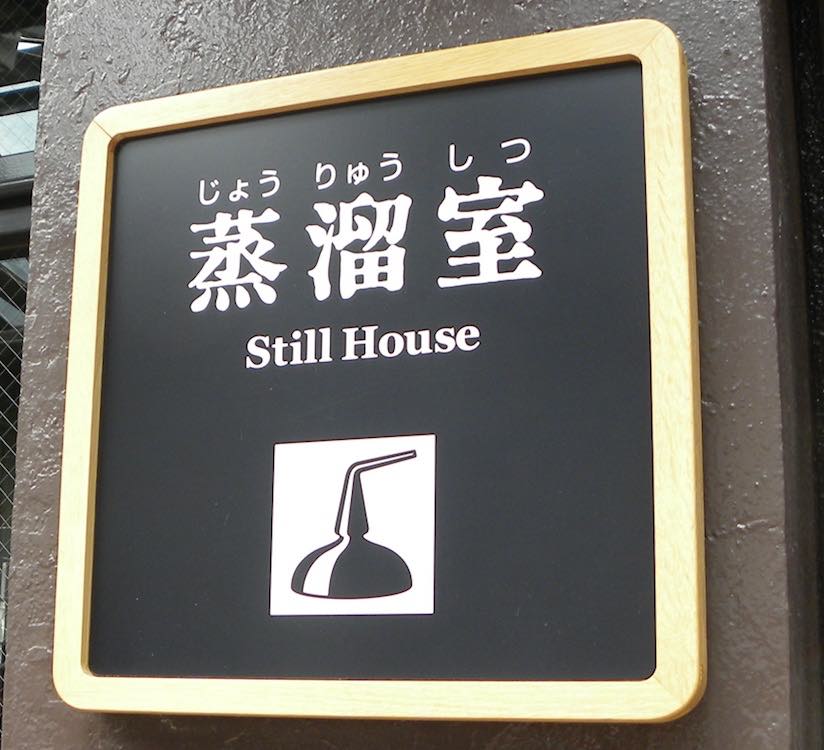
The Still House (Credits: WhiskyGeeks)
Distillating the alcohol “wash” generated by fermentation is an art on its own. The shape and size of the stills plays an important role in the characteristics of the final “new make” spirit. This character of the “new make” spirit will then influence the way it takes to the casks during maturation.
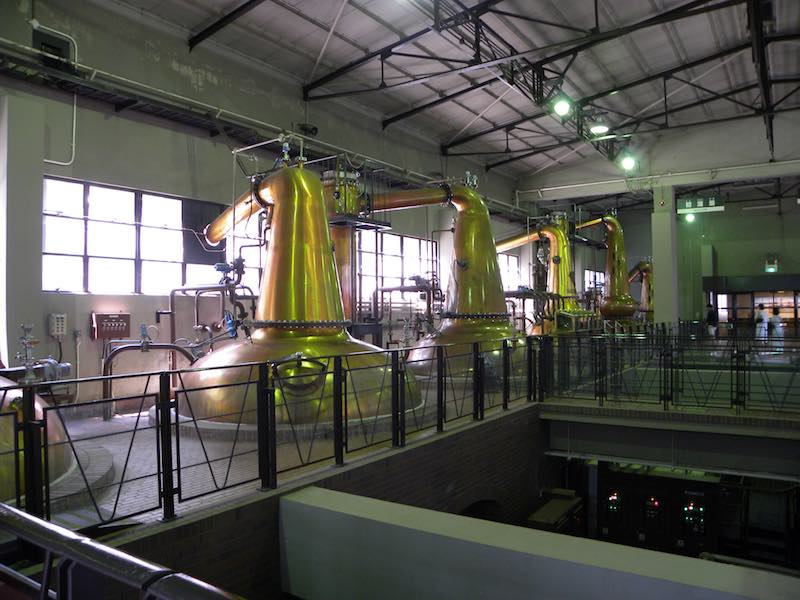
Yamazaki Still Pots (Credit: WhiskyGeeks)
You can see from the picture above that the stills are of different shapes and sizes. The difference in the tilt of the angle, the size and the shape produces different kind of new spirits. The distillation process happens twice to produce a high alcohol content “new make” spirit.
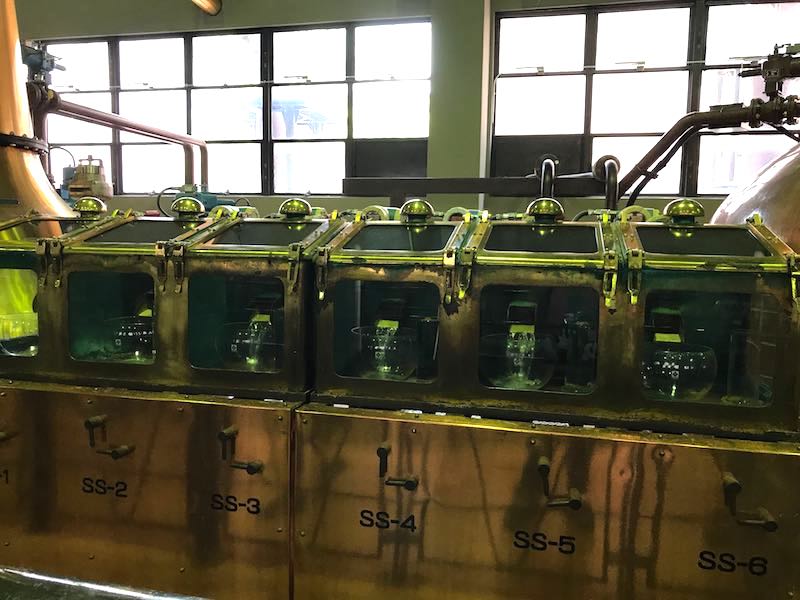
Distillation in Process (Credits: WhiskyGeeks)
At Suntory, they make use of different stills to produce different flavours of “new make” spirit. As you can see above, the new make are labelled for easy identification.
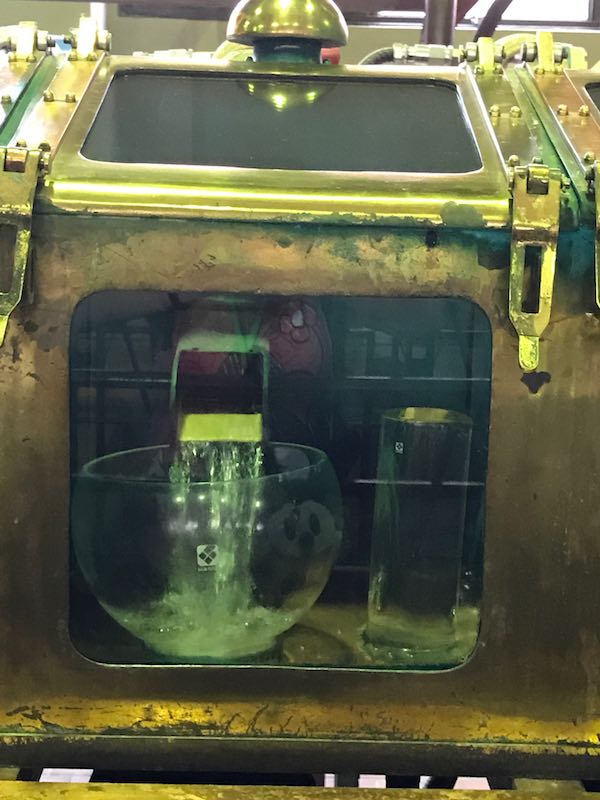
Collecting the alcohol (Credits: WhiskyGeeks)
This is how the “new make: spirit is collected. The clear liquid shown here has a high alcohol concentration. If it makes the cut as a premium “new make”, it will make its way into a cask for maturation into whisky.
Station 3: Cooperage
Coopering is part of the whisky making process. Being equally important when compared to the spirit itself, it certainly deserves a station of its own.

The Cooperage Process (Credits: WhiskyGeeks)
Coopering refers the the making of a cask and how each step of the cooperage experts will influence the eventual cask that they make. The casks used by Suntory are all hand-made, which makes the process even more challenging. We are sorry that the picture is rather blur as the bright light on top of the signage at the darken warehouse had made it difficult to take a good, clear photo.
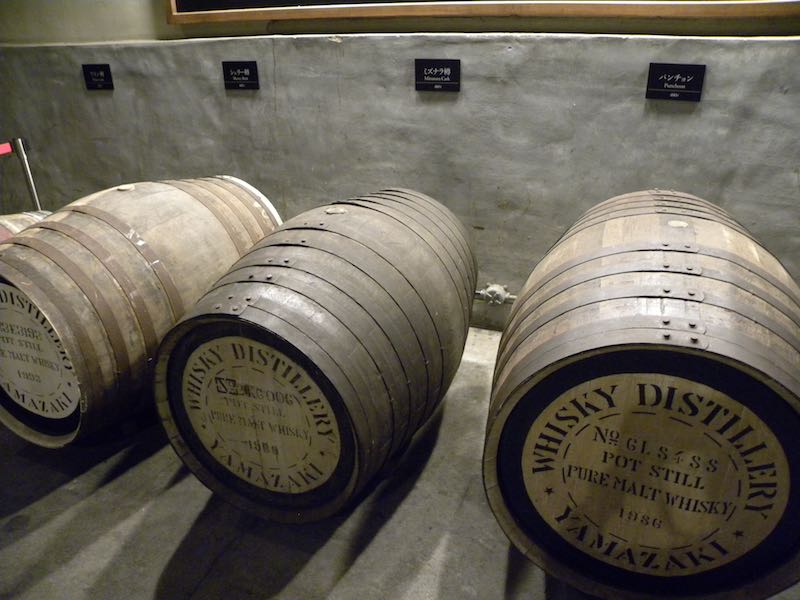
The different casks on display (Credits: WhiskyGeeks)
These are some of the casks that were on display. The tour included education on the different names of the casks such as butts, and hogheads. We will write another article on the different names of the casks soon!
Station 4: Warehouse
This was the defining moment of the distillery tour! Casks upon casks of maturing whisky stood before our eyes, and we got to say that it was just pure delight to walk in and smell that lovely, familiar aroma of wood and whisky.
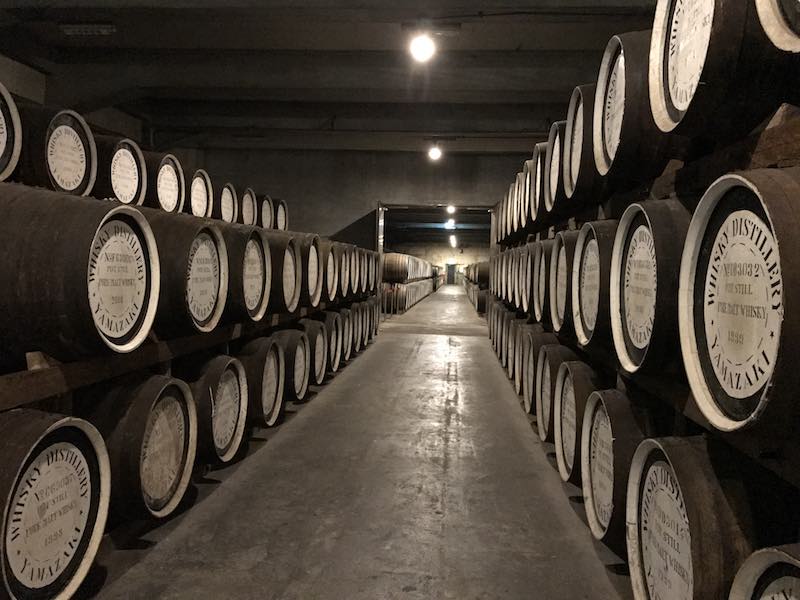
The Yamazaki Warehouse (Credits: WhiskyGeeks)
Just look at that! Rows and rows of maturing whiskies…Our hearts were so full at that moment we though it could burst. Here’s an upclose picture for you.
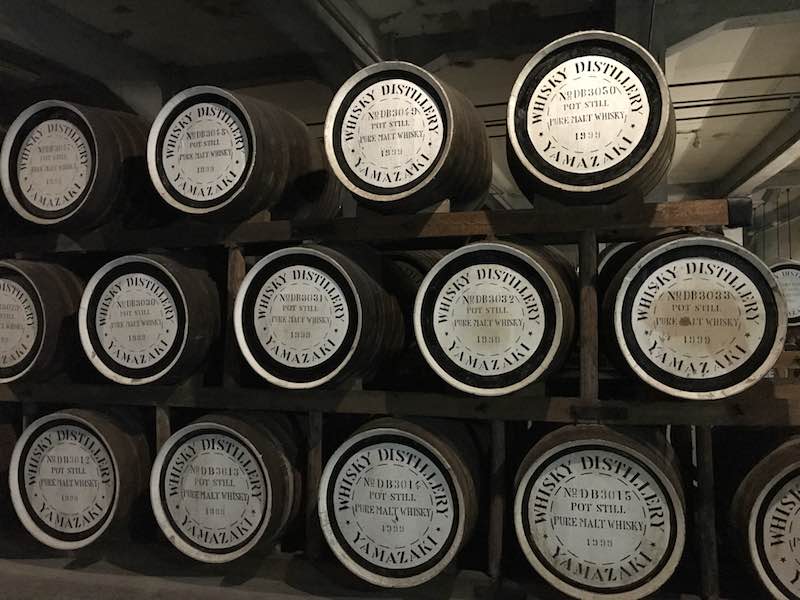
Close-up look at the casks (Credits: WhiskyGeeks)
Notice the different years on the cask? The years tells you when the new make spirit was distilled and poured into the cask. There are plenty of casks with different years, from 1970s, to 1980s and the 2000s. None of them, however, were as exciting as the very FIRST cask ever filled at the Yamazaki Distillery!
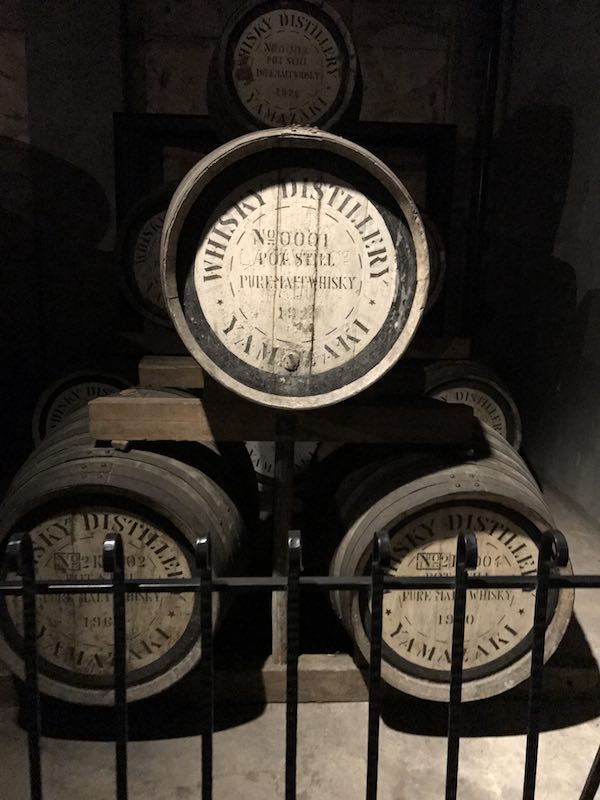
The first ever cask by Yamazaki (Credits: WhiskyGeeks)
Remember the replica we shown you at the extrance? The picture on top shows you the real deal. The real No. 0001 cask made and filled in 1923. All of us were so excited that we were told to tone down so as not to disturb the harmony of the maturing whiskies. It was a tough fight to just take this picture because of the excitement generated!
End of the Tour but not end of the story
We ended the tour with a tasting session. We will not be a spoil sport and revealed what you will taste at the session. To find out, go for the tour when you head for Japan next time!
Like what you have just read?


